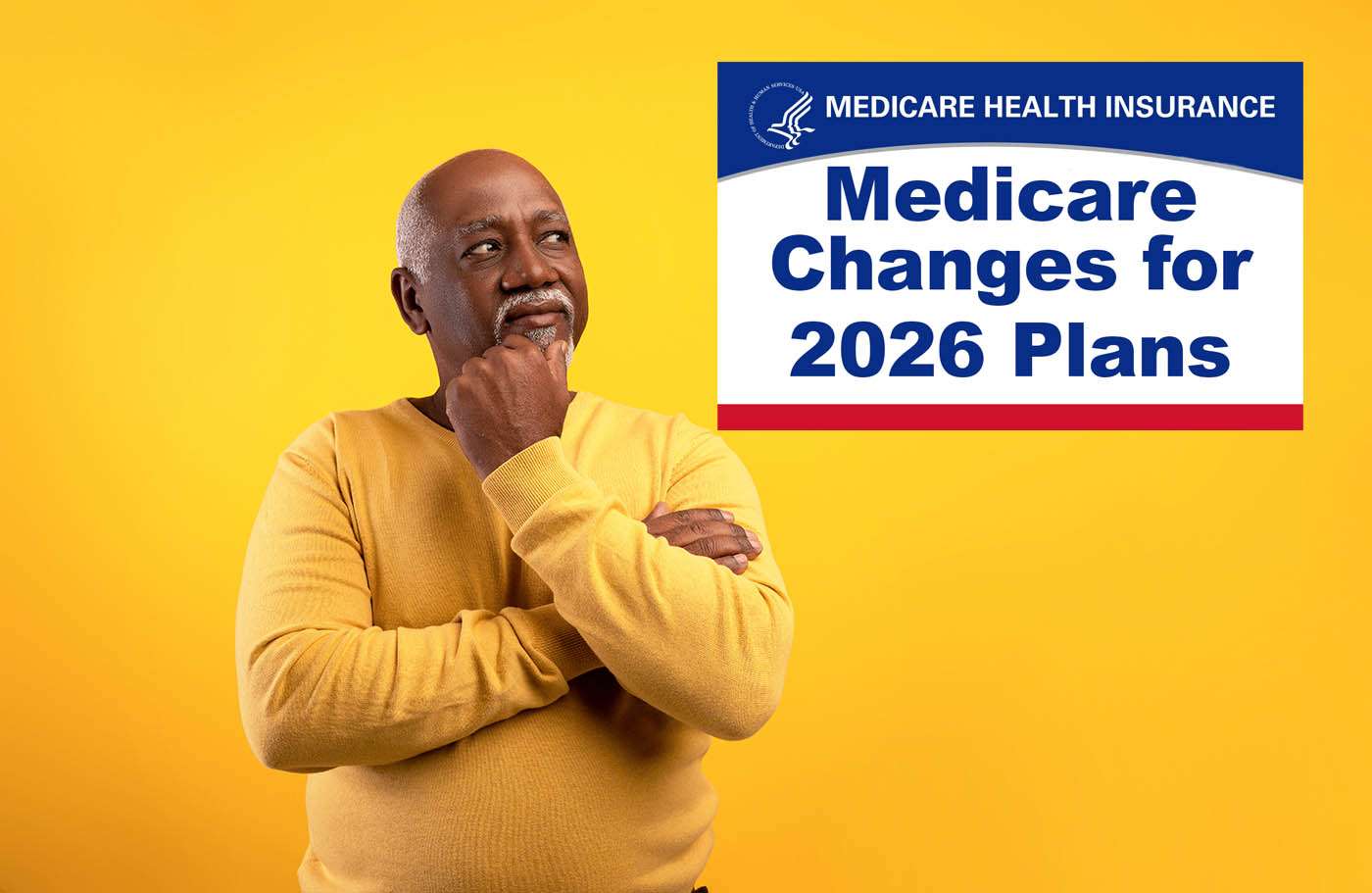Read the Fourth Article: Medicare Supplements
Okay…we’ve waded through Original Medicare Parts A and B, prescription drug plans – Part D, and MediGap plans, also known as Medicare Supplements. Now we get to the part most people want to know about – Medicare Advantage.
Why do most people want to know more about it? Because Medicare Advantage has become the most popular way to receive one’s benefits, because it includes many of the services you would have to buy additional coverage for (dental, vision, hearing, etc.), at no extra cost. Plus, it eliminates the cost of needing a Medicare Supplement (MediGap) and an individual prescription drug plan. The savings can add up to $200 to $400 per month, depending on whether or not you get a Part-B giveback, and which MediGap plan one would have chosen.
So, What is Medicare Advantage?
One day, oh, around 1997, the Medicare gods in the ivory tower said, in between bites of grapes and sips of wine, “You know, we have a mess! There are WAAAAYYY too many moving parts to juggle. We don’t want to work that hard! There’s Part A, Part B, Part D and MediGap…and if they add a dental plan, THAT’s FIVE policies to manage!”
Then one god raised his cup and said, “I have an idea! What if we certified traditional insurance companies like Humana, Aetna, UnitedHealthcare, Et al, and as long as they don’t offer any less than we offer at the gracious CMS (Centers for Medicare and Medicaid Services) to our humble beneficiaries, and if they choose to offer more, they can (and they all do…excuse me for interrupting the gods) …then they can offer what we will call Part C, Medicare Advantage?” And they all raised their goblets and said, “Here, here!!! YAY!” And Medicare Advantage was born with the Balance Budget Act of 1997. However, it would not go into effect until January of 1999.
What Makes Medicare Advantage So Popular?
Medicare Advantage plans offer so much under one umbrella. It includes:
- Parts A, B and D (for Medicare Advantage plans with prescription drugs – MAPDs, because there are Medicare Advantage plans without prescription drugs that are more for veterans and government employees – MAs, which only include Parts A and B).
- You don’t need a Medicare Supplement.
- 99% of them have NO premium, NO deductibles for medical, hospital and prescription drugs.
- They include ancillary services (dental, vision and hearing)
- They include extras, like:
o Gym memberships
o Over-the-counter allowances for things you already buy at Walmart, Walgreens and CVS (vitamins, first-aid stuff, toothpaste, etc.)
o Flex cards to help with dental, vision and hearing costs (not all plans offer this)
o Part-B givebacks that pay a portion or the entirety of one’s Part-B premium (not all plans offer this)
o Transportation to and from medical appointments
o National and global emergency and urgent care (depends on plan)
o Food/utilities cards (depends on plan) - And more!
Therefore, other than the Part-B premium, which everyone must pay, they no longer must pay for their prescription drug insurance on most plans, dental and vision insurance, nor a Medicare Supplement. To put that into dollars, if we take the average costs of $200 for a Plan G Supplement, $35 for a Part-D prescription plan and $50 for a dental plan, one is saving $285 a month.
If you are lucky enough to live in an area where there are plans offering Part-B givebacks (where they pay a portion or all of your Part-B premium to Medicare for you) the savings increase.
How Do I Qualify for a Medicare Advantage Plan?
There are some qualifications for an MA/MAPD, and they are:
- You must be enrolled in Medicare Parts A and B.
- You must live in a location for at least six (6) months out of the year.
That’s it! Now there are other kinds of plans available that have other qualifications, so let’s take a look at those.
Special Needs Plans
Special Needs Plans were designed for, well, as the name implies, people with special needs. In the industry, we call these SNPs (pronounced SNIPS). The idea behind these plans is to provide the majority of the money where the need is greatest. For example, if someone is on a C-SNP (see below) for heart disease, more money will be made available for the tests, procedures and services required to treat a person with this condition.
There are three types of SNPs:
- I-SNPs (Institutionalized Special Needs Plans)
- C-SNPS (Chronic Special Needs Plans)
- D-SNPs or DE-SNPs (depends on the insurance company – which are for Dual Eligible beneficiaries)
Institutionalized Special Needs Plans (I-SNP)
An I-SNP is for someone who is institutionalized in a facility. It could be an assisted-living facility, skilled-nursing facility or other facility providing services to a person who lives there full time.
Chronic Special Needs Plans (C-SNP)
A C-SNP covers certain diseases. Typically, they include:
- Heart disease
- Cardiovascular disease
- Chronic Diabetes
- Lou Gehrig’s disease (ALS)
- End-Stage Renal disease (kidney failure)
But more carriers are adding diseases to the list of what they will cover with a C-SNP.
Dual Eligible Special Needs Plans (D-SNP)
A D-SNP is designed for beneficiaries (the one insured) who have both, Medicare and Medicaid (or a Medicare Savings Program, which will have it’s own article), and juggles who pays what. These are the most generous plans you can find.
The Types of Plans Available
Besides the special needs plans, there are three general kinds of plans available (and a SNP can be an HMO or PPO):
- PPO: Preferred Provider Organization Plan
- HMO: Health Maintenance Organization Plan
- PFFS: Preferred Fee For Service Plan
While there are others like Medicare Medical Savings Account plans, which combine a high-deductible insurance policy with a medical savings account, we won’t be covering those in this article.
PPO Plans
PPOs are popular because they allow certain flexibility. However, that flexibility comes at a cost. Typically, copays are higher, they may have deductibles on some, and some of the extras are not offered on most plans (flex cards, food cards, Part-B givebacks, etc.). There are some PPOs that offer some of these extras, and it is my belief that trend will continue to grow over the years, since competition is fierce.
The reasons people like PPOs include (but are not limited to):
- No primary care provider (PCP) is needed, even though most people pick one regardless, because who wants to be repeating their medical history to every doctor they see.
- No referrals. You can find a doctor in or out of the network and just go.
- In- and Out-of-network providers. While you will typically pay a higher copay for an out-of-network provider, you at least have the option. (There are some PPOs that charge the same in and out-of-network, we call these Medicare Supplement Look-A-Like plans)
- And many PPOs allow you to use it anywhere they have a network nationwide, and you will pay the same low copay for your local network. We call this a take-it-with-you feature.
HMO Plans
HMOs are managed-care products, so they are more restrictive. However, with those restrictions comes more generosity. Since it costs the insurance company less to offer these plans, they spread the wealth.
An insurance company needs to make sure the plan is a win-win-win or it will fail. So, they will make it good for the providers, generous for the beneficiaries (that’s you), and profitable for them so they can pay the bills and stay in business. So, while these plans:
- Require a PCP (primary care provider)
- You must have a referral to see a specialist.
- You can’t go out of the network.
- And other than national and/or global emergency and urgent care coverage, you cannot see a doctor out of the state.
They offer generous benefits that make the plan worthwhile. So, ask yourself:
- If I had to wait 10 days to see a specialist, would it hurt my health?
- Are my needs covered by the doctors in network?
- When I travel, other than in an emergency where I can go to an ER department or an urgent care center, would I really want to go see an orthopedic, gynecological or cardiology doctor?
If the answers support the HMO as a good choice, then enjoy the lower copays, higher OTC allowances, higher Part-B givebacks, flex cards, etc.
But never forget that you are not married to your health plan. If you feel you’ve made the wrong choice, or it’s not covering a need, you can change it. There are certain times you can change your plan, and it’s not just during the Annual Enrollment Period (AEP).
PFFS Plans
PFFS plans are similar to Original Medicare in that you can go to any doctor who accepts Medicare, anywhere Medicare is accepted. Remember, Original Medicare is an FFS (Fee For Service) plan. A PFFS is a PREFERRED Fee For Service plan. Unlike Original Medicare, it DOES have a maximum-out-of-pocket limit. Now, if that’s the case, why don’t many people choose a PFFS, you may ask. Well, because they are notorious for not pay as much; hence doctors can choose to reject them. Therefore, these are typically used by beneficiaries living in rural communities with no network, so they can see whichever doctors are available.
Next week we will finish this portion with:
- When Can You Change My Plan? There are more opportunities than most people know; it’s not just once a year.
- What Are the Penalties If You Don’t Take Medicare On Time?
As we continue on this series, you will come to understand your options better and will be able to decide what is best for you. In the meantime, if you have any questions and can’t wait for the other articles, please feel free to contact us for a NO OBLIGATION FREE CONSULTATION, by clicking on CONTACT US. Also, download your FREE digital Medicare & You 2024 guidebook.
Finally, if this article was forwarded to you, make sure to subscribe to our newsletter below, so you don’t miss any important articles. We never share your information with anyone; we simply use it to provide you the best service possible.

















